The voltage across the power source equals the summed voltage across the resistor, capacitor, and inductor at any time (t). This is shown in the equation below:
$$Ri(t)+\frac{1}{C}\int_0^ti(t)+L\frac{d\:i(t)}{d\:t} = v_s(t)$$
for this example let: $$v_s(t) = 6$$
The laplace transform of this is:
$$RI(s)+\frac{1}{Cs}I(s)+LsI(s)=\frac{6}{s}$$
Rearrange it to make I(s) the subject:
$$I(s)=\frac{(\frac{6}{s})}{R+\frac{1}{Cs}+Ls}$$
Do some algebra to put it in a form that is easy to do an inverse laplace transform (ie. a form that represents an example in a laplace transform table)
$$I(s) = \frac{6}{Ls^2+Rs+\frac{1}{C}}$$
But I get stuck at this part. How would I do the algebra and inverse laplace transform so I can find what i(t) equals?
I expect that the answer will have the exponation e^-at in it, as the current will decay because of the energy dissipated in the resistor. I also expect it will have a sin, cos, both, or an imaginary number in it as the current will oscillate. According to wolfram alpha the answer is this. From this you can see that if 4L > CR^2 then the discriminant (the square root in the numerator of exponent) will be an imaginary number. You could then use eulers formula to get an equations with sin and cos in it.

simulate this circuit – Schematic created using CircuitLab
